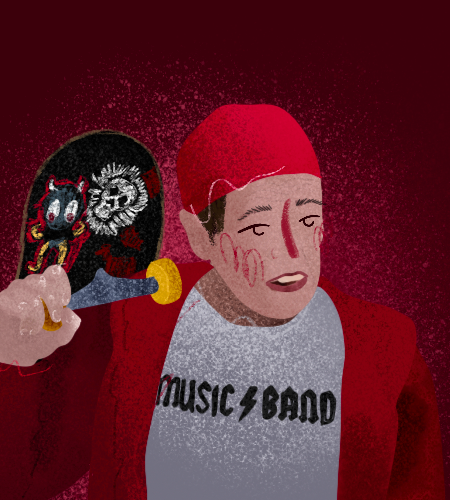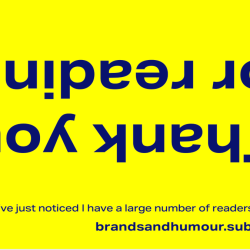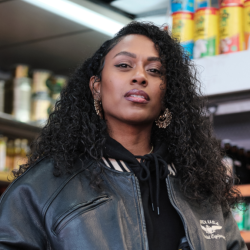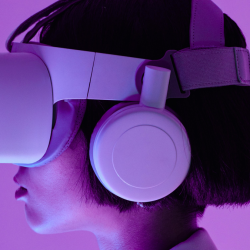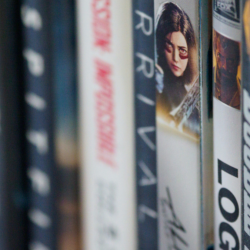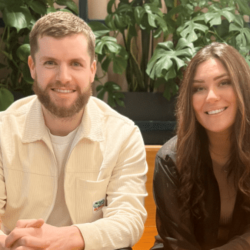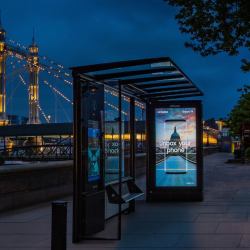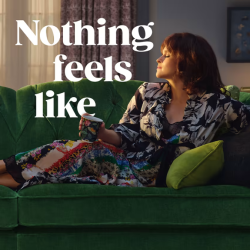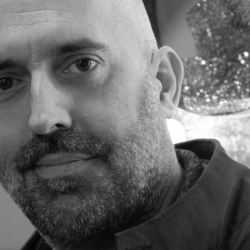Work in a creative agency and I’m sure you’ll be used to receiving client briefs that list an array of media channels that absolutely must be used because ‘we have already set the budget aside for it’. That leaves little room for negotiation based on, say, the key target audience’s media consumption habits. Or general effectiveness of the media platform itself. Or perhaps the fact that sometimes we should let the creative idea lead the media selection.
We’re still so used to wanting to see our ads on TV, billboards and in print (aka the ‘big media’) that sometimes we may risk ignoring the fact that certain types of messages would do better on other channels and that there may be underrated channels that should be taken advantage of. We’re also living in the age of ad-blockers, that are often free, very effective and frequently have updates to remain continually effective across a variety of platforms (including YouTube). We tend to assume that and behave as if brands can influence people through the media they decide to utilise. That brands decide which media is important or powerful.
But it’s really the people who influence the media that brands should be using. Maybe the argument isn’t that certain types of media are more effective than others; it’s that certain media are better used by brands for the right purposes so that we stop annoying our audience.
Reach versus attention
Our relentless obsession with big media lies in our misguided belief that reach is the same as impact. Recently, Dan White published his illustration on LinkedIn that brought to light the idea of reach vs. active attention. Many of us may be surprised by seeing how low down the list OOH is.
The point is, we could reach 1 million people with a billboard, an OOH ad in a tube station or a print ad but if most of them are glossing over the message, what’s the point? How many of us have stood on the Tube platform, waiting and zoning out right in front of a huge ad? That explains the difference between reach and active attention.
For your brand’s message to be effective, you need your audience to engage with your message by firstly paying proper attention to them and thinking about the best media channel for the message you’re trying to convey. That means making sure the media channels your brand opts for will ensure that your audience will pay as much active attention to it. That’s likely why direct mailers still exist today — they’re quick and targeted.
In such a digital world, JICMAIL has found that people devote 108 seconds of their attention to a piece of direct mail as compared to 46 seconds to a door drop that isn’t targeted. The learning is to not to get hyper-fixated on the number of eyeballs your brand’s message can garner, but the number of minds it can engage.
Go where people want you
The issue with brands and media these days is that everyone wants to be on the same platform, with the same media strategy (budget allowing). Influencer activations on TikTok (scroll on your FYP and you’ll start wondering if everything there is a sponsored post). Branded posts on Instagram (we have no respite). Big OOH at a huge traffic junction (we’re too busy dealing with traffic to see!).
There’s a concept known as ‘the medium is the message’, which can be applied here because it involves understanding the audience’s mindset when engaging with a certain media platform. A cinema ad makes sense if you want to take the audience on a visually and/or intellectually immersive journey to convey a brand/product story because your audience is captive and ready to be entertained by the unexpected.
The same message on a YouTube pre-roll ad would be met with a drastically different reaction because your audience knows that they can press ‘skip ad’ or, if they can’t then they know that they can use it as a quick break before their chosen YouTube video actually begins. But more than that, ‘the medium is the message’ is an important concept because it also helps to influence your audience’s perception of your brand for even being present on that media channel.
Reddit is an extremely active platform, used by thousands of communities, subcultures and fandoms. It would be perfect for a brand wanting to target a few high value niches or just to get a conversation going. Ten years ago Spotify started a few threads asking Redditors for their musical choices for things like ‘that song when you wanted to stage dive’ and ‘What tracks should we add to our Ultimate Entrance Music playlist?’ These received over 10,000 submissions, over 2,300 comments and more than 450 brand interactions – and of course, various Reddit-inspired playlists.
Nowadays we have Discord, which is being used by brands to remain close to and engage millions of younger millennials and Gen Z for the promise of a tight-knit and more personal community. Once only the domain of gamers, there are now 150 million active monthly users and 19 million active servers (or communities) weekly; that are largely not gaming-related. For brands, a Discord allows you to get your audience to be very involved with new product development, feedback and just to build a stronger brand community overall that will eventually see a positive impact on your sales.
Think of Discord as a way to emphasise your brand-building efforts. This is where your audience will want to give you their energy and attention, vs. YouTube ads, print ads and other general forms of media. While still largely untapped by brands, it poses a great opportunity.
And if Reddit and Discord seem too technical, Instagram has a new ‘broadcast’ feature that allows brands to invite followers to a ‘chat group’-esque interface, making it feel intimate and personal. It’s meant to be used to share sneaks, upcoming releases or even to host quizzes, polls and AMAs. Tala, UK-based activewear brand, has two broadcast channels — one for sneak peaks/sale content and the other for restock announcements. This keeps the brand hyped up in the minds of its audience and keeps the anticipation of new releases high.
The overall lesson here is to get specific with your intentions behind your brand’s campaign and go where your audience wants to be engaged by your brand. Otherwise, leave them alone. They’re already inundated by ads and branded messages. Let your audience decide when to let your brand in.
If it needs to be big, make their attention worth their while
If you are a brand that’s targeting the masses and therefore trying to force your audience’s attention towards you, then make it worth their while (especially since we live in the age of ad-blockers). A Specsavers stunt has been making the rounds online for how brilliantly it’s been able to hijack people’s attention. In a situation like this, your audience doesn’t feel forced to pay attention by the brand – they now want to pay attention.
The idea is rooted in the platform of ‘Should Have Gone to Specsavers’, which has been going on for 22 years yet still feels relevant, fresh and fun because of their novel take on OOH media. Don’t want to do a stunt like this? Then how about letting your audience feel like they’re in on the joke with a bold and sassy comeback, like Tom Birt’s clever take on a mock EasyJet OOH placement (how we wish this were truly a real ad, our audiences deserve it!).
At the end of the day, we need to remember that the best ads are the ones that don’t feel like ads. Either they feel like a true story — emotional, rich, evocative — or they entertain.
While media decisions can’t influence how emotional an ad is, they can certainly play a role in providing entertainment. So use your media decisions to find ways to make your audience feel like they’re glad to have spent a few minutes, or seconds, on your brand’s message by ensuring that you focus on active attention (and not necessarily reach), going where you know your audience will want to hear from you and, if you really need to force their attention, make it an entertaining media placement.
Featured image: Andrea Piacquadio / Pexels











